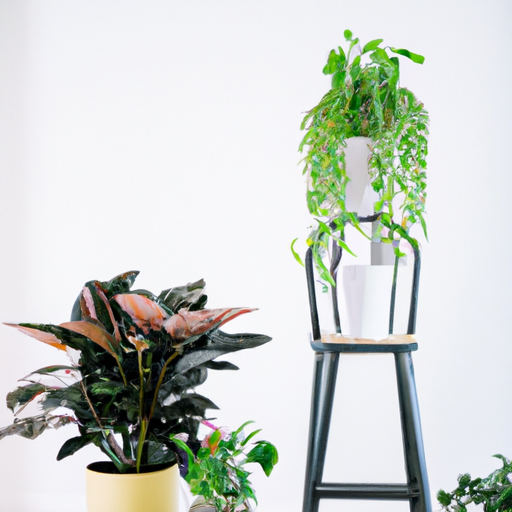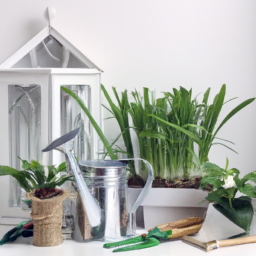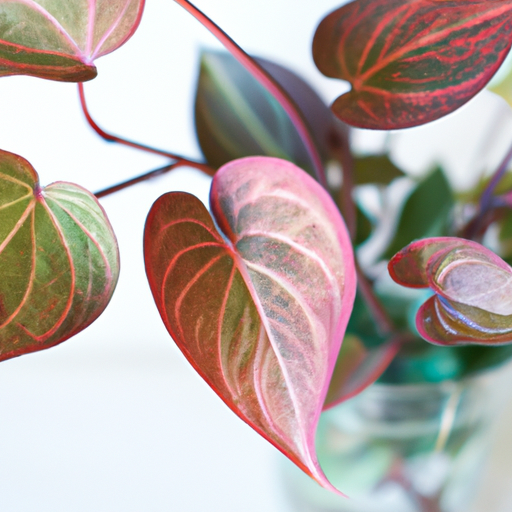
Benefits of Indoor Plants: How They Enhance Your Living Space
Welcome to the ultimate guide on creating your indoor oasis! In this article, we will explore the numerous benefits of indoor plants and how they can enhance your living space. Indoor plants not only add beauty and a touch of nature to your home but also provide numerous health and psychological benefits. Let’s dive in and discover why incorporating indoor plants into your decor is a fantastic idea!
1. Air Purification and Improved Indoor Air Quality
One of the most significant benefits of indoor plants is their ability to purify the air and improve indoor air quality. Plants naturally absorb carbon dioxide and release oxygen through a process called photosynthesis. However, certain indoor plants, such as the Snake Plant (Sansevieria), Spider Plant (Chlorophytum comosum), and Peace Lily (Spathiphyllum), go a step further by removing harmful toxins from the air, such as formaldehyde, benzene, and trichloroethylene.
Having these air-purifying plants in your living space can help reduce the risk of respiratory issues, allergies, and asthma. They also increase humidity levels, which can alleviate dry skin and respiratory discomfort caused by dry indoor air. So not only do indoor plants add a touch of greenery to your home, but they also contribute to a healthier environment for you and your family.
Furthermore, research has shown that indoor plants can enhance cognitive function, improve concentration, and boost productivity. They can also help reduce stress levels, promote relaxation, and create a calming atmosphere, making them perfect for home offices or study areas.
2. Natural Stress Relievers and Mood Enhancers
Indoor plants have a remarkable ability to reduce stress and improve overall well-being. Studies have shown that being around plants can lower blood pressure, heart rate, and cortisol (stress hormone) levels. The presence of greenery indoors can create a soothing and tranquil environment, helping to alleviate anxiety and promote mental clarity.
Moreover, indoor plants can enhance mood and create a positive ambiance. Their vibrant colors and pleasant fragrances can evoke feelings of happiness, relaxation, and contentment. Incorporating plants into your living space can uplift your spirits and create a sense of harmony and balance.
Whether you choose small succulents, hanging plants, or large floor plants, their presence can make a significant difference in your overall mood and well-being. So why not create your own indoor oasis and surround yourself with nature’s calming influence?
3. Aesthetically Pleasing and Versatile Decor Elements
Indoor plants are not only beneficial for your health and well-being but also serve as stunning decorative elements. With a wide variety of plant species available, you can easily find plants that complement your interior style and personal preferences.
From lush tropical plants like Monstera deliciosa and Bird of Paradise to elegant flowering plants like Orchids and Anthuriums, there are countless options to choose from. You can also experiment with different planters, pots, and hanging displays to add visual interest and create unique focal points in your living space.
Indoor plants can be incorporated into any room, whether it’s the living room, bedroom, kitchen, or bathroom. They can be placed on windowsills, shelves, coffee tables, or even mounted on walls. The versatility of indoor plants allows you to express your creativity and create a personalized indoor oasis that reflects your style and personality.
In conclusion, indoor plants offer numerous benefits that go beyond mere aesthetics. They purify the air, improve indoor air quality, reduce stress, enhance mood, and serve as versatile decor elements. By incorporating indoor plants into your living space, you can create a serene and vibrant oasis that promotes well-being and adds a touch of nature to your everyday life. So why wait? Start transforming your home into an indoor oasis today!
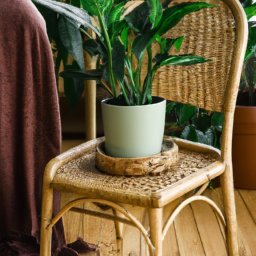
Choosing the Right Indoor Plants for Your Home Decor
Welcome to the second part of our guide on creating your indoor oasis! In this section, we will delve into the exciting world of choosing the right indoor plants for your home decor. Indoor plants not only add beauty and freshness to your living space but also provide numerous health benefits. They improve air quality, reduce stress, and create a serene ambiance.
1. Assess Your Space and Lighting Conditions
Before selecting indoor plants, it’s crucial to assess your space and lighting conditions. Different plants have varying light requirements, and understanding the available natural light in your home will help you choose plants that thrive in those conditions.
If you have ample natural light streaming through your windows, you can opt for plants that require bright, indirect light, such as Philodendrons, Spider Plants, or Peace Lilies. On the other hand, if your space has limited light, you can still create an indoor oasis by choosing low-light plants like Snake Plants, ZZ Plants, or Pothos.
Consider the size and layout of your space as well. Taller plants like Fiddle Leaf Figs or Dracaenas can add vertical interest and make a statement in larger rooms, while smaller plants like Succulents or Herbs are perfect for compact spaces or windowsills.
2. Determine Your Plant Care Commitment
Indoor plants require varying levels of care and attention. Some plants are more forgiving and can withstand occasional neglect, while others need regular watering, misting, or specific humidity levels. Assess your lifestyle and the amount of time you can dedicate to plant care.
If you’re a busy individual or a beginner plant parent, consider low-maintenance plants like Snake Plants, Pothos, or ZZ Plants. These plants are known for their resilience and ability to thrive even with minimal care. On the other hand, if you enjoy tending to plants and have more time to invest, you can choose plants that require more specialized care, such as Orchids or Maidenhair Ferns.
It’s important to note that overwatering is a common mistake that can harm indoor plants. If you tend to forget to water or are often away from home, select plants that can tolerate occasional dry spells, such as Succulents or Cacti.
3. Consider Your Decor Style and Plant Aesthetics
Your indoor plants should complement your existing decor style and enhance the overall aesthetics of your space. Consider the color palette, textures, and overall vibe of your home when selecting plants.
If you have a minimalist or modern decor style, plants with clean lines and simple foliage like Snake Plants or Aloe Vera can seamlessly blend in. For a bohemian or eclectic style, you can opt for trailing plants like String of Pearls or Boston Ferns to add a whimsical touch.
Additionally, consider the leaf shape, color, and size of the plants. Variegated plants like Calatheas or Prayer Plants have striking patterns that can become focal points in your decor. Large-leaved plants like Monstera Deliciosa or Bird of Paradise create a tropical and dramatic effect.
Don’t be afraid to mix and match different types of plants to create visual interest and variety. Experiment with different heights, textures, and colors to achieve a harmonious and visually appealing indoor oasis.
Now that you have a better understanding of how to choose the right indoor plants for your home decor, you’re one step closer to creating your indoor oasis. Remember to assess your space and lighting conditions, determine your plant care commitment, and consider your decor style and plant aesthetics. Stay tuned for the next section of our guide, where we will explore the best ways to arrange and display your indoor plants!
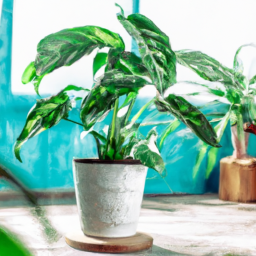
Creating Your Indoor Oasis: A Guide to Indoor Plant Decor
3. Essential Tips for Creating a Welcoming Indoor Plant Display
Welcome to the world of indoor plant decor! Adding plants to your living space not only enhances the aesthetics but also brings a sense of tranquility and freshness. Creating a welcoming indoor plant display requires careful consideration and planning. In this guide, we will explore three essential tips to help you create your own indoor oasis.
1. Choose the Right Plants for Your Space
When selecting plants for your indoor display, it’s important to consider the lighting conditions and the available space. Different plants have varying light requirements, so make sure to choose plants that thrive in the amount of natural light your space receives.
If you have a bright and sunny room, plants like succulents, cacti, and spider plants are excellent choices. These plants are known for their ability to tolerate direct sunlight. On the other hand, if your space has low light conditions, consider plants like pothos, snake plants, and peace lilies, as they can thrive in low to moderate light.
Additionally, consider the size of your space when choosing plants. If you have limited space, opt for smaller plants or use hanging planters to maximize vertical space. Larger plants, such as fiddle leaf figs or monstera deliciosas, can be great statement pieces in larger rooms.
2. Create a Cohesive Design with Containers and Planters
The containers and planters you choose can greatly impact the overall aesthetic of your indoor plant display. Consider the style and theme of your space when selecting containers, as they should complement the existing decor. Whether you prefer modern, minimalist, or bohemian styles, there are a wide variety of containers available to suit your taste.
When it comes to choosing containers, prioritize those with drainage holes to prevent waterlogging and promote healthy plant growth. If you fall in love with a container without drainage, you can always place a layer of small rocks or pebbles at the bottom to create a reservoir for excess water.
Another way to create a cohesive design is by grouping plants with similar watering needs together. This not only makes it easier for you to care for them but also creates a visually appealing arrangement. Consider using shelves, plant stands, or wall-mounted planters to create different levels and add dimension to your display.
3. Provide Proper Care and Maintenance
Once you have set up your indoor plant display, it’s crucial to provide the proper care and maintenance to ensure the health and longevity of your plants.
First and foremost, watering is a fundamental aspect of plant care. Different plants have different watering requirements, so it’s essential to research and understand the needs of each plant in your display. Overwatering can lead to root rot, while underwatering can cause wilting and stunted growth. Find the right balance and establish a watering routine that works for your plants.
In addition to watering, regular pruning and grooming are necessary to keep your plants looking their best. Remove any dead or yellowing leaves, trim overgrown branches, and pinch back leggy growth to encourage bushier growth. This will not only improve the appearance of your plants but also promote healthier growth.
Lastly, don’t forget about providing adequate light and humidity. Rotate your plants periodically to ensure even growth, as they tend to lean towards the light source. If your space lacks humidity, consider using a humidifier or placing a tray of water near your plants to create a more favorable environment.
By following these essential tips, you can create a welcoming indoor plant display that brings beauty and serenity to your living space. Remember to choose the right plants for your space, create a cohesive design with containers and planters, and provide proper care and maintenance. Enjoy the process of creating your indoor oasis and watch as your plants thrive and transform your home into a green haven!
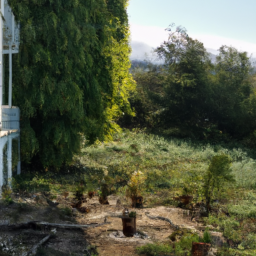
Incorporating Indoor Plants into Different Rooms: Ideas and Inspiration
Indoor plants not only add a touch of nature to your home but also bring numerous benefits to your overall well-being. They help purify the air, reduce stress levels, and create a calming atmosphere. If you’re looking to incorporate indoor plants into different rooms of your house, we’ve got you covered with some ideas and inspiration to create your very own indoor oasis.
The Living Room
Your living room is the heart of your home, and incorporating indoor plants can enhance its ambiance and create a relaxing space for you and your guests. Here are some ideas to get you started:
1. Statement Plants: Consider placing a large, statement plant like a fiddle leaf fig or a monstera deliciosa in a corner of your living room. These plants not only make a bold visual impact but also improve air quality.
2. Hanging Plants: Hanging plants like pothos or spider plants can add a touch of greenery to your living room without taking up valuable floor space. Hang them near windows or from the ceiling to create an eye-catching display.
3. Plant Shelves: Install shelves near windows or empty walls to create a dedicated space for your indoor plants. Mix and match different plant varieties and sizes to create an interesting and vibrant display.
The Bedroom
Your bedroom should be a calm and serene space, and incorporating indoor plants can help create a peaceful atmosphere conducive to relaxation and sleep. Here are some ideas for bringing plants into your bedroom:
1. Lavender Plants: Lavender is known for its soothing scent, making it a perfect choice for your bedroom. Place a small lavender plant on your nightstand or windowsill to enjoy its calming aroma.
2. Succulents: Succulents are low-maintenance plants that thrive in bright light conditions. They come in various shapes and sizes, making them ideal for adding a touch of greenery to your bedroom without overwhelming the space.
3. Vertical Gardens: If you have limited floor space, consider creating a vertical garden in your bedroom. Install wall-mounted planters and fill them with your favorite plants to create a stunning living wall.
The Kitchen
The kitchen is not only a place for cooking but also a gathering spot for family and friends. Incorporating indoor plants into your kitchen can add freshness and vibrancy to the space. Here are some ideas:
1. Herb Garden: Create a mini herb garden on your kitchen countertop or windowsill. Plant herbs like basil, rosemary, and mint in small pots and enjoy the convenience of having fresh herbs at your fingertips while cooking.
2. Hanging Herb Baskets: If you’re short on counter space, consider hanging herb baskets from the ceiling or a wall-mounted rod. This not only adds a decorative element but also keeps your herbs easily accessible.
3. Climbing Plants: Install trellises or plant climbing plants like ivy or philodendron near windows or empty walls in your kitchen. These plants not only add a lush green touch but also create a natural backdrop.
By incorporating indoor plants into different rooms of your house, you can create a refreshing and inviting atmosphere while enjoying the numerous benefits they bring. Experiment with different plant varieties, placement, and sizes to find the perfect balance that suits your style and preferences. Happy decorating!

Maintaining and Caring for Your Indoor Plants: A Step-by-Step Guide
Indoor plants not only add beauty and freshness to your living space but also provide numerous health benefits. However, in order to enjoy the full benefits of indoor plants, proper care and maintenance are essential. In this step-by-step guide, we will walk you through the process of maintaining and caring for your indoor plants, ensuring they thrive and bring life to your indoor oasis.
1. Understanding Your Indoor Plants
The first step in maintaining and caring for your indoor plants is to understand their specific needs. Different plants have different requirements in terms of light, temperature, humidity, and watering. Take some time to research and identify the specific needs of each plant you have in your indoor oasis.
When it comes to light, some plants thrive in bright, indirect light, while others prefer low light conditions. Place your plants accordingly to ensure they receive the right amount of light. Similarly, temperature and humidity requirements vary among plants, so make sure you provide the optimal conditions for each plant.
Watering is another crucial aspect of plant care. Some plants require frequent watering, while others prefer to dry out between waterings. Overwatering or underwatering can lead to root rot or dehydration, respectively. It’s important to find the right balance and water your plants accordingly.
2. Creating a Regular Care Routine
Consistency is key when it comes to maintaining and caring for your indoor plants. Establishing a regular care routine will help you stay on top of their needs and ensure their well-being. Here’s a step-by-step guide to creating a care routine:
Step 1: Check your plants regularly for any signs of stress or pests. Look for yellowing leaves, wilting, or discoloration, which may indicate a problem.
Step 2: Dust off the leaves of your plants regularly to allow them to breathe and absorb light more efficiently. You can use a soft cloth or gently spray them with water to remove dust.
Step 3: Water your plants according to their specific needs. Before watering, check the moisture level of the soil by inserting your finger about an inch deep. If it feels dry, it’s time to water. Use room temperature water and ensure proper drainage to prevent waterlogging.
Step 4: Fertilize your plants regularly to provide them with essential nutrients. Choose a fertilizer specifically formulated for indoor plants and follow the instructions on the packaging for application frequency and dosage.
Step 5: Prune your plants as needed to maintain their shape and promote healthy growth. Remove any dead or yellowing leaves, and trim overgrown branches to encourage new growth.
3. Troubleshooting Common Issues
Even with proper care, indoor plants may encounter some common issues. Here are a few troubleshooting tips to help you address these problems:
Issue 1: Yellowing leaves – This could be a sign of overwatering, underwatering, or nutrient deficiency. Adjust your watering schedule or consider fertilizing to address the issue.
Issue 2: Wilting – Wilting can be caused by underwatering, overwatering, or temperature extremes. Check the moisture level of the soil and adjust your watering accordingly. Ensure your plants are not exposed to drafts or direct heat sources.
Issue 3: Pests – Common indoor plant pests include aphids, mealybugs, and spider mites. Use organic pest control methods or consult a professional if the infestation is severe.
Issue 4: Lack of growth – If your plants are not growing as expected, they may need more light or nutrients. Consider moving them to a brighter spot or adjusting your fertilization routine.
By understanding your plants, establishing a care routine, and troubleshooting common issues, you can ensure the health and vitality of your indoor oasis. With proper maintenance and care, your indoor plants will thrive, bringing beauty and serenity to your living space.
Frequently Asked Questions (FAQ)
1. How do indoor plants enhance the decor of a space?
Indoor plants add a touch of natural beauty to any space, bringing life and vibrancy to your home or office. They can improve air quality, reduce stress, and create a calming ambiance.
2. What are some popular indoor plants for beginners?
For beginners, low-maintenance plants like pothos, snake plants, and ZZ plants are great choices. These plants are resilient, require minimal care, and can thrive in various light conditions.
3. How can I choose the right indoor plants for my space?
Consider factors such as the amount of natural light available, the room’s humidity levels, and your commitment to plant care. Research different plant species and their specific requirements to find the perfect match for your space.
4. How often should I water my indoor plants?
The watering frequency depends on the type of plant, humidity levels, and the season. Generally, it’s best to allow the top inch of soil to dry out before watering again. Overwatering can lead to root rot, so it’s important to find the right balance.
5. Can indoor plants survive in low-light conditions?
Yes, some indoor plants can thrive in low-light environments. Plants like peace lilies, pothos, and ferns can adapt to lower light levels, but they may grow slower compared to plants in brighter areas.
6. How can I prevent common indoor plant pests?
To prevent pests, regularly inspect your plants for signs of infestation, such as yellowing leaves or small insects. Keep your plants clean, avoid overwatering, and consider using natural pest control methods like neem oil or insecticidal soap.
7. Are there any indoor plants that are pet-friendly?
Yes, several indoor plants are safe for pets. Some examples include spider plants, Boston ferns, and areca palms. However, it’s always important to research specific plants, as some can be toxic to pets if ingested.
8. How can I incorporate indoor plants into small spaces?
In small spaces, consider using hanging planters, wall-mounted planters, or vertical gardens to maximize space. You can also choose compact plants like succulents or bonsai trees that don’t require much room.
9. Do indoor plants require fertilization?
Indoor plants benefit from regular fertilization to ensure healthy growth. Choose a balanced indoor plant fertilizer and follow the instructions on the packaging. Be careful not to over-fertilize, as it can harm the plants.
10. What are some signs that my indoor plants need repotting?
If you notice roots growing out of the drainage holes, stunted growth, or the plant becoming top-heavy and unstable, it may be time to repot. Additionally, if the soil dries out quickly or water runs straight through the pot, it could indicate the need for a larger container.
Emily Bloomfield is an interior designer and horticulturist specializing in incorporating indoor plants into interior spaces. With a background in both design and plant science, Emily offers a unique perspective on creating harmonious living environments through the synergy of greenery and aesthetics. Her creative ideas and innovative solutions make her a sought-after authority in the field.

